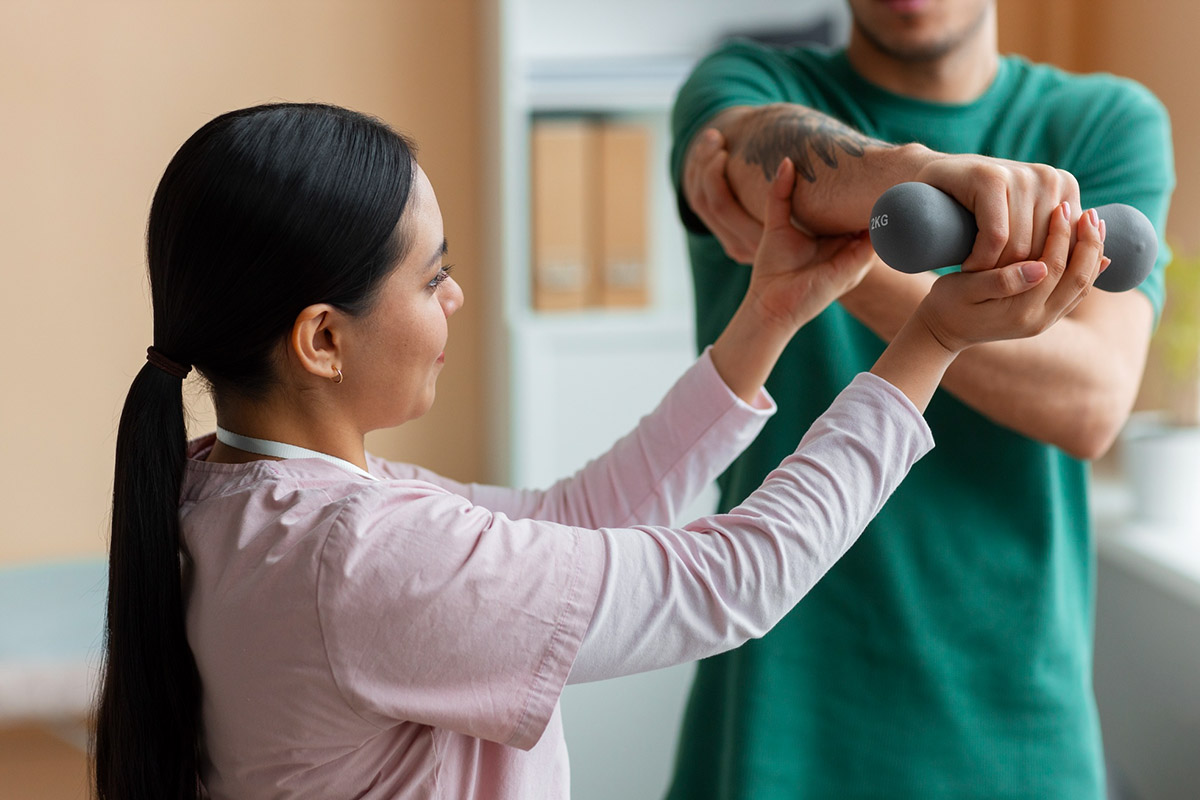
Understand the Problem
Back pain is one of the most common health complaints today — often caused by poor posture, muscle strain, or disc issues. When the pain radiates down the leg, it may be due to Sciatica, which occurs when the sciatic nerve is compressed or irritated.
At Physio Absolute, we provide advanced physiotherapy care for both chronic and acute back pain, including sciatica, using personalized and evidence-based treatments.
Symptoms You Shouldn’t Ignore
Back Pain
- Dull ache or sharp pain in the lower back
- Stiffness or reduced flexibility
- Pain after sitting or standing for long periods
- Pain during bending, lifting, or twisting
Sciatica
- Sharp, shooting pain down the leg
- Tingling or numbness in the buttock, thigh, or foot
- Weakness in the leg muscles
- Pain worsens with coughing, sneezing, or prolonged sitting
Common Causes
- Herniated or bulging discs
- Lumbar spondylosis or arthritis
- Muscle or ligament strain
- Poor posture or sedentary lifestyle
- Pregnancy-related back issues
- Degenerative disc disease
- Spinal stenosis or nerve compression
Our Expert Physiotherapy Approach
At Physio Absolute, we focus on relieving pain, restoring mobility, and preventing recurrence through a multi-step personalized plan.
1. Pain Relief Modalities
- Ultrasound Therapy, TENS, Hot/Cold Therapy, IFT
- Manual therapy to relieve tension in back and leg muscles
2. Sciatic Nerve Relief Techniques
- Gentle stretching and nerve gliding exercises
- Mobilization of the spine and affected nerve areas
3. Core Strengthening & Stabilization
- Exercises to strengthen lower back, abdominal, and pelvic muscles
- Helps in improving posture and spinal support
4. Postural & Ergonomic Correction
- Guidance for workstation setup, lifting techniques, and lifestyle changes
- Custom advice for reducing strain during daily activities
5. Spinal Mobilization & Traction
- Helps relieve disc pressure and improve spinal alignment
Faq
Yes, physiotherapy is one of the most effective ways to manage and treat both conditions naturally.
Improvement can be seen in 5–10 sessions, depending on the severity and cause.
Complete rest is not recommended. Guided movement under a physiotherapist’s supervision promotes healing.
